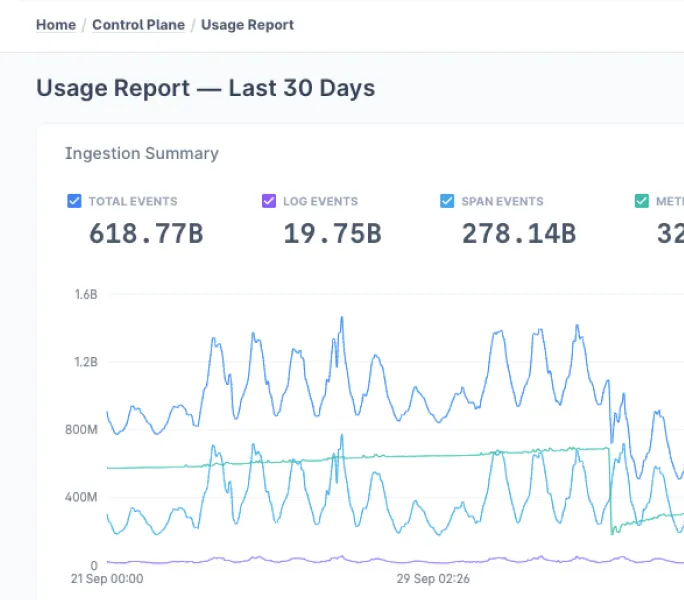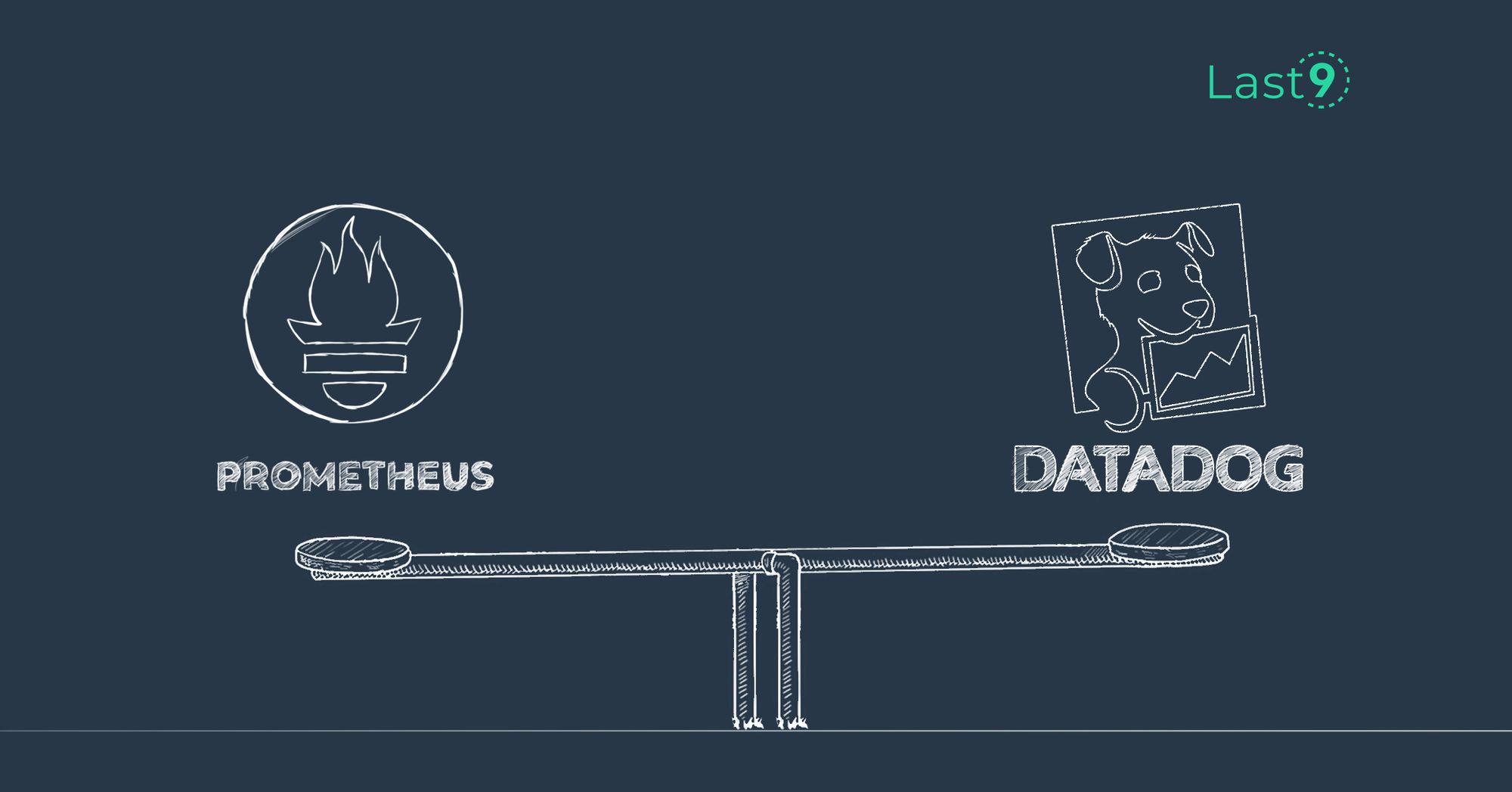Monitoring and logging of distributed systems—and software functionalities such as RAM usage, request count, and storage space—are pivotal to improving software performance. Prometheus and the ELK stack are popular open-source tools often deployed to this end. This article explores the architecture, capabilities, key differentiators, and use cases of both tools.
What is Prometheus?
Prometheus is an open-source monitoring and alerting tool that collects, processes, and visualizes metrics as time-series data from various applications. It supports four main metric types—counters, gauges, histograms, and summaries. Prometheus offers horizontal scalability for large-scale deployments by enabling sharding. This involves splitting and distributing workloads and scraping targets into small groups across multiple independent servers. It also supports hierarchical federation, which allows various Prometheus servers to aggregate metrics from different sources concurrently.
Features of Prometheus
The following features make Prometheus a leading application monitoring and alerting toolkit.
Query Language (PromQL)
Prometheus has a flexible query language, PromQL, that enables users to perform complex queries, aggregations, and transformations on collected metrics in real time. PromQL uses scalars and instant and range vectors to query time series, enable an expression’s return to be displayed for analysis as a graph or table, or export to backend systems via the HTTP API.
Time-Series Database
Prometheus has a time series database that stores metrics in blocks (based on predefined time limits) using streams of time-stamped values, allowing for processing, querying, and aggregating metrics within specific time windows. The time-series data is identified via a multidimensional identifier consisting of a metric name and a label or set of optional key-value pairs.
Labels make identifiers (and the Prometheus data model) multidimensional by enabling a label or set of labels belonging to the same metric name to identify an instance of that metric. This eases the filtering, relabeling, and analysis of time series in distributed systems, enabling the selection of relevant and exclusion of redundant metrics. This, in turn, allows for improved query performance and swift issue remediation.
Service Discovery
Prometheus supports service discovery mechanisms, including file-based and HTTP service discovery, for identifying new target services without requiring manual configuration. While its file-based service discovery enables Prometheus to read YAML and JSON files to discover/update its target, its HTTP service discovery allows it to periodically find HTTP endpoints to scrape for metrics. It also integrates with service discovery systems such as Kubernetes, Consul, and EC2.
Alerting System
Prometheus’ built-in alert manager allows users to define alerting rules based on metric conditions. Prometheus sends notifications to predefined channels when an alert is triggered, enabling timely response and mitigation of issues. Prometheus also helps alert grouping and deduplication to reduce alert fatigue.
Visualization and Dashboards
Prometheus' web-based graphical interface, the Prometheus Expression Browser, allows users to visualize metrics, providing interactive features for zooming, panning, and graphical representation. Prometheus also integrates seamlessly with popular visualization tools, enabling users to create customizable dashboards for real-time monitoring.
Exporters and Integrations
Prometheus has a rich network of exporters that allow you to collect metrics from various (third-party) systems and export them as Prometheus metrics. It also integrates with other tools and systems, such as alert managers, visualization platforms, and time-series databases.
How Does Prometheus Work?
Prometheus uses a pull-based model to retrieve metrics from configured targets, including application servers, databases, and exporters. It regularly scrapes metrics from the targets by default, every 15 seconds or based on customized timeframes. Prometheus captures various metric types during scraping, such as CPU usage, memory usage, and request latency. It stores them in its time-series database, which organizes them based on metric names, labels, and timestamps for efficient querying and analysis.
PromQL is then used to filter and analyze the stored metrics to retrieve information related to the health/performance of software environments or specific services in distributed systems. With its user-friendly Expression Browser and precise alert manager, Prometheus enables metric visualization as graphs, charts, and alerting based on user-defined thresholds.
Prometheus, while easy to get started, often runs into high cardinality challenges. Levitate - our managed time series data warehouse provides powerful cardinality control levers to manage high cardinality metrics. Get started today.
What is ELK?
ELK is an acronym for Elasticsearch, Logstash, and Kibana, which collectively present a comprehensive, open-source solution for logging and analysis. Let’s look at each tool and its functionalities.
1. Elasticsearch
Elasticsearch is a distributed search and analytics engine designed to store, search, and analyze large volumes of data in real time. Based on Apache Lucene, Elasticsearch offers a schema-less JSON-based document storage that allows for fast and flexible analytics, providing query results in milliseconds and enabling the analysis of various log data types/formats.
It achieves this speed via distributed indexing; that is, it does not query files directly; instead, it searches indexes. An index is a set of logically related documents that enables the quick identification of query results by mapping predefined search terms to documents in which they occur. Elasticsearch also has an extensive array of REST APIs contributing to its swift query capabilities. All these make it highly scalable and suitable for handling massive data amounts.
2. Logstash
Logstash enables Elasticsearch by serving as its log ingestion and processing pipeline. It collects, parses, and filters logs and other data in various file formats from different sources, including servers and applications, to extract relevant information and enrich data. It supports multiple inputs, filters, and outputs, making it highly customizable and adaptable to different use cases.
3. Kibana
Kibana is a web-based, user-friendly data visualization tool that provides interactive dashboards, bar graphs, pie charts, and maps for swift analysis of data queried and stored in Elasticsearch. This enables rapid trend and anomaly detection for improved application health and security. Kibana also supports time-series metric visualizations.
Features of ELK
The following are five key features of ELK:
Real-Time Monitoring and Alerting
ELK offers full and multi-stack monitoring, allowing centralized log management across the entire stack and multiple ELK deployments. The Elastic stack also offers a log retention policy with a default, reconfigurable time frame of 7 days to prevent memory and latency issues associated with excessive data storage. It also allows you to set up alerts and notifications based on predefined conditions and automatically receive alerts on cluster changes such as license expiration and log anomalies.
Log Security and Access Control
The ELK stack supports data encryption at rest and in transit, authentication, role-based access control (RBAC), attribute-based access control (ABAC), strong passwords for cluster settings, IP filtering, as well as field and file-based security to prevent unauthorized access to monitoring data and security settings. It also offers cluster auditing to enable the discovery of authentication/log-in failures and other security incidents, and supports the integration of third-party security systems.
Scalability
Elasticsearch is designed to scale horizontally to handle large amounts of log data, allowing you to add more nodes to your cluster. This sharding process is replicated to ensure data is not lost if a node fails.
High Availability and Fault Tolerance
With Elasticsearch’s scalability and distributed architecture, data is sharded across nodes and replicated via cross-cluster and cross-datacenter replication mechanisms. Cross-cluster replication duplicates indices in remote/primary and local/secondary clusters, allowing disaster recovery and reducing query latency.
Cross-datacenter replication allows for duplicating read-only copies of monitoring data across data centers for disaster recovery. With replication, the ELK stack enables automatic node recovery when a node fails, automatic data rebalancing to prevent system failures, and rack awareness—which contains the loss of shards and their replicates by identifying nodes located on/in the same rack or physical server during shard allocation.
Machine Learning
Elasticsearch has a built-in machine learning plugin that allows you to automatically detect anomalies such as unusually high latency and failed authentications and their root causes. It also enriches data with predictions of future application behavior to improve query results. In addition, this plugin studies log trends to reduce mean time to repair (MTTR) and allow for automated decision-making.
How Does ELK Work?
The process starts with Logstash, which collects raw log data and filters, parses, and transforms it, preparing it for further processing.
The transformed data is then sent to and stored in Elasticsearch’s database, which is indexed for real-time querying of specific log events or patterns.
Kibana then provides a visualization interface that allows you to interact with and understand the performance implications of queried logs.
Also, by setting up specific conditions or patterns in Logstash, you can generate alerts when certain events or log entries match the defined criteria. The ELK stack can also be connected to other tools or data sources to enhance its capabilities. For example, third-party tools, like Grafana, can be integrated with Kibana to enable advanced dashboarding and visualization.
Prometheus vs ELK: A Comparison
While both are open-source toolkits that seamlessly integrate with advanced data visualization tools and use RESTful HTTP/JSON API access controls, sharding, and replication, the most prominent difference is that Prometheus is deployed for metrics monitoring. In contrast, the ELK stack is widely used for logging. However, there are several other differences described in the table below.
| Differentiators | Prometheus | ELK |
|---|---|---|
| Monitoring Approach | Uses a pull-based periodic metric scraping approach. | Ingests logs from configured targets via a push-based model. |
| Query Language | Provides PromQL specifically designed for time-series metric data. | Has a flexible querying capability using JSON syntax but lacks a dedicated query language. |
| Ecosystem | Is licensed under Apache 2.0, which allows for software source code modifications that enable managed services and vendor support. | Is licensed by Elastic and Server Side Public License, which are not as flexible and may impede the creation of managed services that can further improve its performance. |
| Scalability and Architecture | Can easily be scaled horizontally via federation and sharding. | Horizontally scaling ELK is more complex as it involves multiple components. |
| Use Cases | Highly effective for metrics monitoring in dynamic environments such as containerized and cloud-native applications. | Ideal for monitoring log types such as application and security logs. |
| Database | Uses a time-series SQL-based database. | Employs a search engine database that stores diverse types of NoSQL, unstructured data. Uses inverted indexes which enable incredibly rapid searches. |
| Visualization | Has a basic in-built visualization feature but integrates well with Grafana for advanced visualization. | Provides powerful out-of-the-box visualization capabilities. |
Choosing between Prometheus and ELK
From the preceding, it is clear that both toolkits have their strengths and weaknesses. For instance, they are both horizontally scalable, with Prometheus being the more accessible to scale and ELK offering a swifter monitoring stack. However, the right choice depends on your specific requirements, whether you want to monitor metrics or logs.
Prometheus may be better if you require sophisticated monitoring and alerting capabilities for time-series metric data. But if comprehensive log monitoring is your priority, ELK might be the preferred choice.
It might also be helpful to evaluate the solutions in a test environment to assess their performance in your specific use case.
Conclusion
Prometheus and ELK are both popular monitoring tools with powerful capabilities. Choosing between them ultimately depends on your specific monitoring needs. You can leverage either or both to bolster system reliability, enhance operational efficiency, and improve end-user experience for your software applications.
FAQs
#1. Which one is better for monitoring: Prometheus or ELK?
The choice depends on your specific monitoring needs. Prometheus is ideal for time-series metrics, while ELK is well-suited to log monitoring.
#2. Can Prometheus be used for log analysis like ELK?
While third-party tools like Grafana Loki or OpenSearch can be incorporated into Prometheus exporters to parse logs, it is primarily not a logging toolkit like ELK.
You can send logs via Loki to metrics stores like Levitate,.
#3. Can ELK replace Prometheus for monitoring?
ELK can provide log-based metrics monitoring capabilities, but it is primarily a log management toolkit and cannot replace Prometheus for time-series metrics monitoring.
#4. Can I use Prometheus and ELK together?
Yes, Prometheus and ELK can be used complementarily for comprehensive metrics and log monitoring.
#5. Which tool is easier to set up, Prometheus or ELK?
The ease of setup depends on various factors, including familiarity with the tools. Both have extensive documentation and user communities to assist with the setup process.




